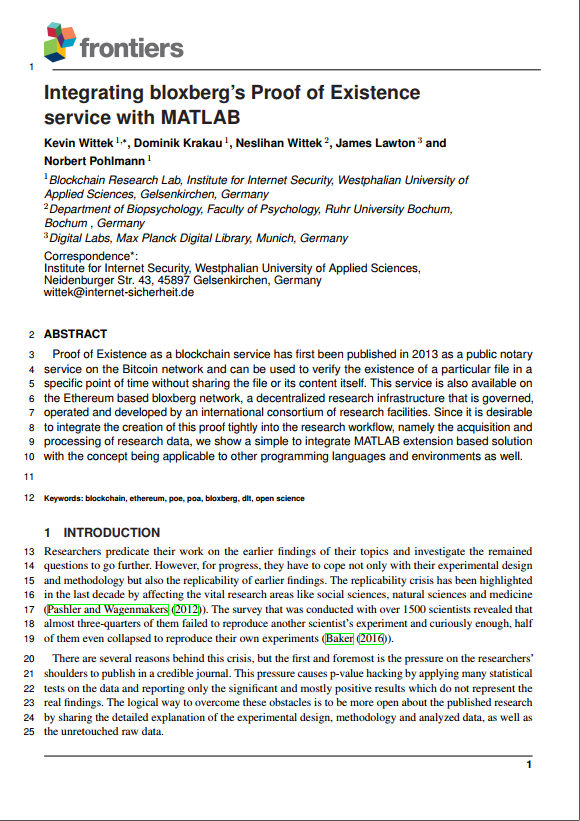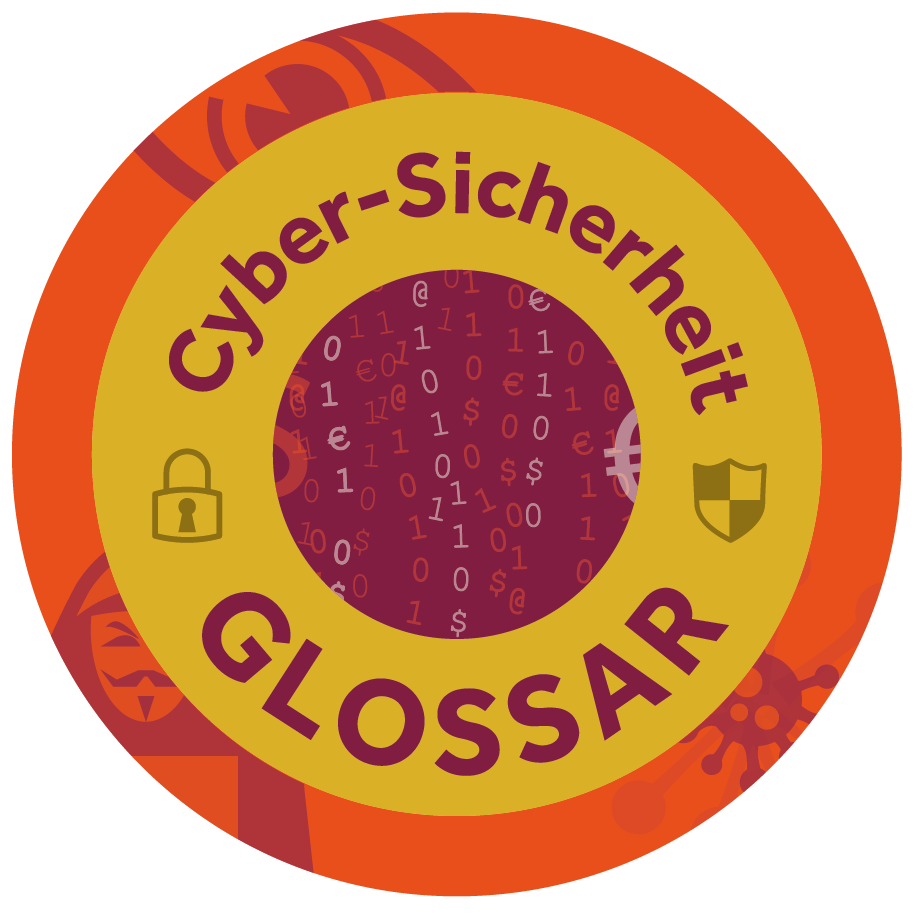Integrating bloxberg’s Proof of Existence service with MATLAB - Prof. Dr. Norbert Pohlmann
Integrating bloxberg’s Proof of Existence service with MATLAB | |
 | K. Wittek, D. Krakau, N. Wittek, J. Lawton, N. Pohlmann: Proof of Existence as a blockchain service has first been published in 2013 as a public notary service on the Bitcoin network and can be used to verify the existence of a particular file in a specific point of time without sharing the file or its content itself. This service is also available on the Ethereum based bloxberg network, a decentralized research infrastructure that is governed, operated and developed by an international consortium of research facilities. Since it is desirable to integrate the creation of this proof tightly into the research workflow, namely the acquisition and processing of research data, we show a simple to integrate MATLAB extension based solution with the concept being applicable to other programming languages and environments as well. Researchers predicate their work on the earlier findings of their topics and investigate the remained questions to go further. However, for progress, they have to cope not only with their experimental design and methodology but also the replicability of earlier findings. The replicability crisis has been highlighted in the last decade by affecting the vital research areas like social sciences, natural sciences and medicine (Pashler and Wagenmakers (2012)). The survey that was conducted with over 1500 scientists revealed that almost three-quarters of them failed to reproduce another scientist’s experiment and curiously enough, half of them even collapsed to reproduce their own experiments (Baker (2016)). There are several reasons behind this crisis, but the first and foremost is the pressure on the researchers’ shoulders to publish in a credible journal. This pressure causes p-value hacking by applying many statistical tests on the data and reporting only the significant and mostly positive results which do not represent the real findings. The logical way to overcome these obstacles is to be more open about the published research by sharing the detailed explanation of the experimental design, methodology and analyzed data, as well as the unretouched raw data. Weitere Informationen zum Thema “Blockchain-Technologie”:
Vorträge: Vorlesung: „Blockchain-Technologie – Lehrbuch Cyber-Sicherheit“ Informationen über das Lehrbuch: „Cyber-Sicherheit“ Glossareintrag: Blockchain-Technologie kostenlos downloaden |
 | |



